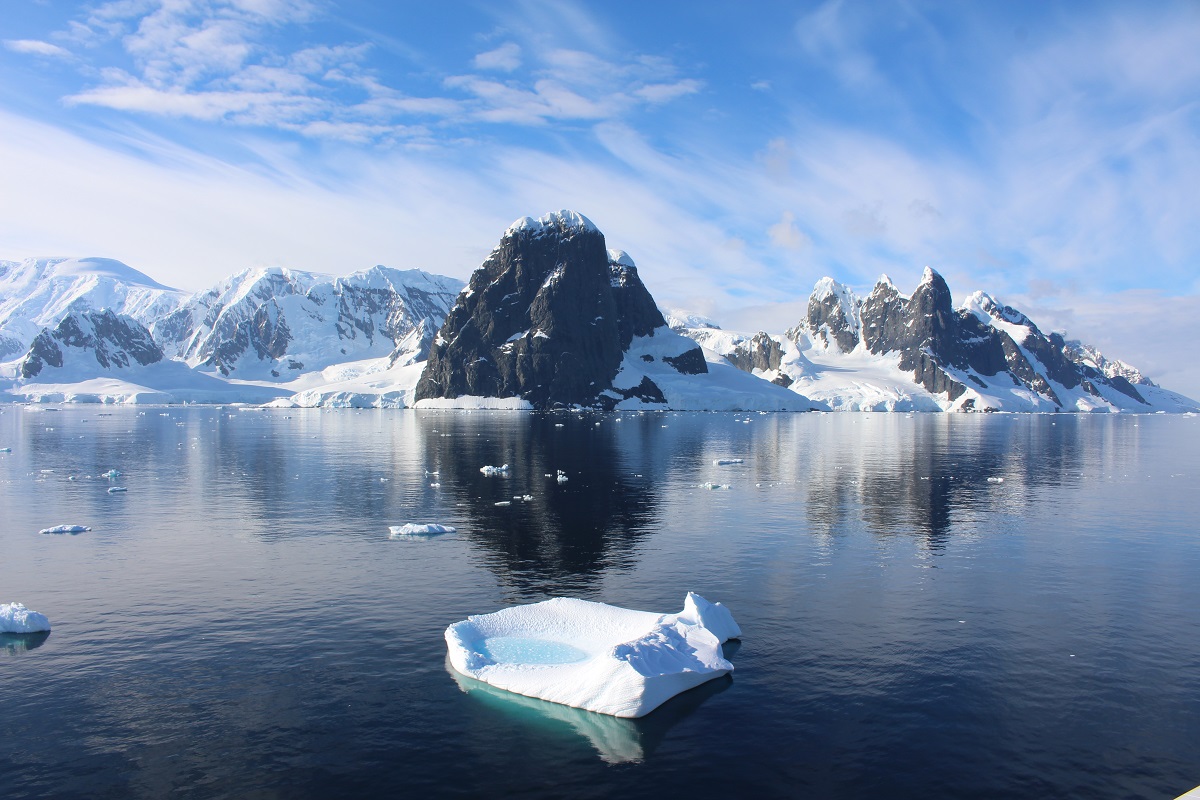This post is also available in:
![]() Deutsch
Deutsch ![]() Français
Français ![]() Italiano
Italiano ![]() Português
Português ![]() Español
Español
The Antarctic Peninsula is the northernmost section of the Antarctic continent, it extends to a latitude between 63 ° S and 74 ° S, because of this this peninsula has the mildest climate of the entire Antarctic continent. In particular, the west coast of the Peninsula, which has an Antarctic maritime climate, is the mildest part of the Antarctic Peninsula. The Antarctic Peninsula is very mountainous and its mountains, which even exceed 3,000 meters in height, mean that the east coast of the Peninsula is generally much colder than the western one.
AN ICE CONTINENT
On the whole region the hottest months are December, January and February, while the coldest months are June, July and August. The maximum average temperatures of the hottest months reach values close to zero or a few degrees below zero. While the average minimum temperatures remain abundantly below zero even in the hottest months. During the winter months, that is between June and August, the average minimum temperatures reach values between -15 ° C and -18 ° C. The maximum average temperatures of the colder months reach values ranging from -10 ° C to -6 ° C.
Precipitation, which is almost exclusively snowy, varies considerably within the Antarctic Peninsula. On most of the western coast and in the northern part of the peninsula’s eastern coast, rainfall exceeds 600 mm per year and is generally well distributed throughout the year. Only along the southern section of the east coast of the Antarctic Peninsula does precipitation decrease considerably, reaching averages varying between 400 mm and 200 mm per year.
The sea surrounding the Antarctic peninsula is frozen for most of the year, and in part melts only during the months between December and March. Vast ice shelves are also found in the summer months in the Weddell Sea, along the eastern side of the peninsula.
WHEN TO GO TO THE ANTARCTIC PENINSULA
The Antarctic Peninsula represents the northernmost section of the Antarctic continent. From the climatic point of view, obviously the main problem in this area of the planet is the cold. So the best time to travel to this spectacular area of the Earth is the relatively warmer months of the summer season. That is, the months between December and February. During these months, the average daily temperatures along the northern coast of the Antarctic peninsula are close and sometimes higher than zero degrees. These months are also those in which the hours of light are at the highest levels and in the areas south of the Antarctic Polar Circle the sun never sets.
The Australian Government page on Antarctica.
[divider]
THE CLIMATE OF THE ANTARCTIC PENINSULA: CLIMATE TABLES
[divider]
| BASE ESPERANZA (25 meters) | ||||
| Month | Average low (°C) | Average high (°C) | Precip. (mm) | Rainy days (snowy days) |
| January | -1,8 | 3,1 | 56 | 14 (16) |
| February | -2,9 | 2,6 | 65 | 14 (15) |
| March | -6,4 | -0,4 | 75 | 17 (16) |
| April | -11,1 | -3,4 | 59 | 17 (16) |
| May | -13,4 | -5,6 | 54 | 14 (14) |
| June | -15,1 | -6,6 | 47 | 11 (13) |
| July | -15,0 | -6,4 | 54 | 13 (14) |
| August | -14,7 | -6,2 | 72 | 15 (14) |
| September | -11,1 | -2,7 | 62 | 15 (16) |
| October | -7,4 | 0,3 | 56 | 15 (15) |
| November | -4,6 | 1,3 | 65 | 16 (16) |
| December | -2,1 | 3,2 | 69 | 16 (16) |
| YEAR | -8,8 | -1,7 | 726 | 177 (181) |
[divider]
| MARAMBIO (196 meters) | ||||
| Month | Average low (°C) | Average high (°C) | Precip. (mm) | Snowy days |
| January | -3,6 | 0,1 | 56 | 16 |
| February | -5,2 | -0,6 | 48 | 13 |
| March | -9,9 | -3,5 | 75 | 13 |
| April | -15,4 | -7,9 | 59 | 12 |
| May | -17,2 | -10,0 | 54 | 9 |
| June | -18,7 | -10,9 | 47 | 8 |
| July | -18,4 | -10,9 | 54 | 8 |
| August | -18,8 | -10,8 | 72 | 7 |
| September | -15,0 | -6,9 | 62 | 8 |
| October | -10,6 | -3,0 | 56 | 10 |
| November | -7,0 | -1,4 | 65 | 13 |
| December | -3,7 | 0,5 | 59 | 15 |
| YEAR | -12,0 | -5,4 | 707 | 132 |
[divider]
This post is also available in:
![]() Deutsch
Deutsch ![]() Français
Français ![]() Italiano
Italiano ![]() Português
Português ![]() Español
Español
